Five
INTO THE 20TH CENTURY
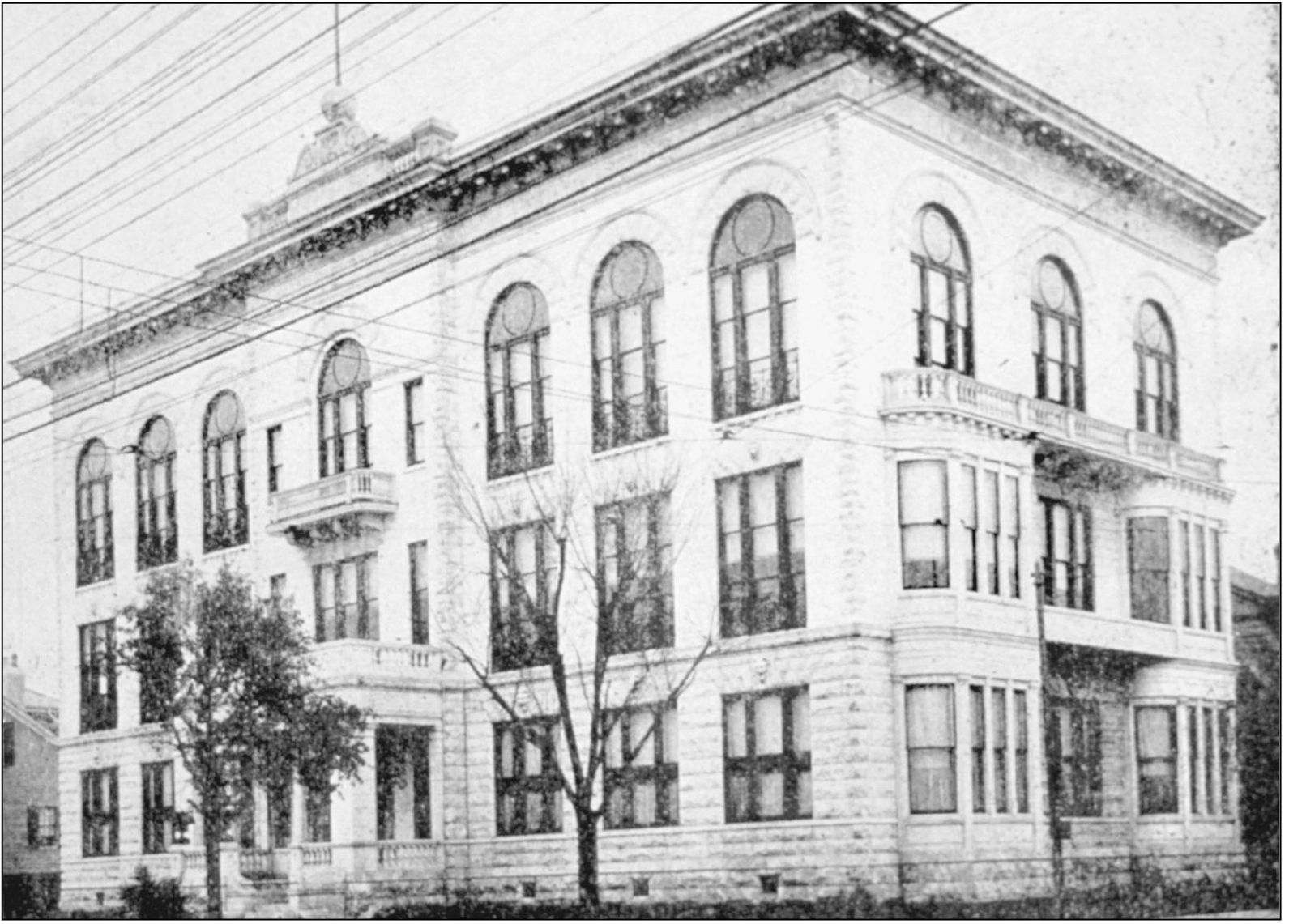
The YMHA (Young Men’s Hebrew Association) evolved after several attempts by young Jewish families to enter into an organization. Finally, on November 22, 1891, 300 gentlemen gathered at the Grunewald Hotel in response to a circular proposing the organization. The “home” of the organization, the Athenaeum, was dedicated November 18, 1896, at the corner of St. Charles Avenue and Clio Street. For many years, the meeting of the courts of Rex and Comus at midnight on Mardi Gras day, the official end of Carnival, took place in the Athenaeum’s ballroom, even though Comus did not allow Jewish members. The Athenaeum burned down in 1937.

Pictured is the basketball team at the YMHA around 1920. Among the team members are M. Dresner, J. D. Dresner, Ricki Katz, Earl Hyman, and Messrs. Share and Goldberg. Many of New Orleans’s great Jewish athletes got their start at the YMHA’s gym.

The YMHA indoor championship softball team of 1910 is pictured. They are, from left to right, as follows: (sitting) C. Wenar, George Danziger (manager), Julius Michaelis (captain), and Stanford Blum; (standing) Charles Kahn, two unidentified men (one of whom may be C. Eiseman), A. D. Danziger (chairman of the athletic committee), Marion Weil, Moise Lichentag, Harry Weil, and Zac Adler.

The Jewish Ledger, published by the Steeg family, covered the Jewish community of New Orleans and the mid-South, particularly the Reform community. Rabbi Max Heller of Temple Sinai was the first editor, but Rabbi Mendel Silber of Gates of Prayer served in that capacity for many years. The publication contained, besides Jewish news of New Orleans and other Southern cities, social, historical, and topical articles.

Isidore Newman School, now one of the most prestigious college preparatory schools in the New Orleans area, began as a manual-training school for the children in the Jewish Widows and Orphans Home. The suggestion for such a school came from Rabbi Isaac L. Leucht to the home board in 1889, which endorsed the idea, and in 1902, Isidore Newman offered to fund the building, which was constructed on Peters Avenue (now Jefferson Avenue) within walking distance of the home. The campus is now enlarged to include state-of-the-art classrooms, an elaborate gymnasium with swimming pool, and a football field. Its first major addition was the new lower school building, given by Percival Stern in 1947. During Newman’s centennial celebration, a new lower school was dedicated, including a new Percival Stern Early Education Center.

“Manual” as it was then called, opened in 1903, and over the years, it attracted non-“Home Kids” because of its superior education. Here we see the kindergarten class (above) and the home economics classroom in 1905. In the 1930s, it dropped the “Manual” from its title, as its focus changed from vocational training to college preparation.

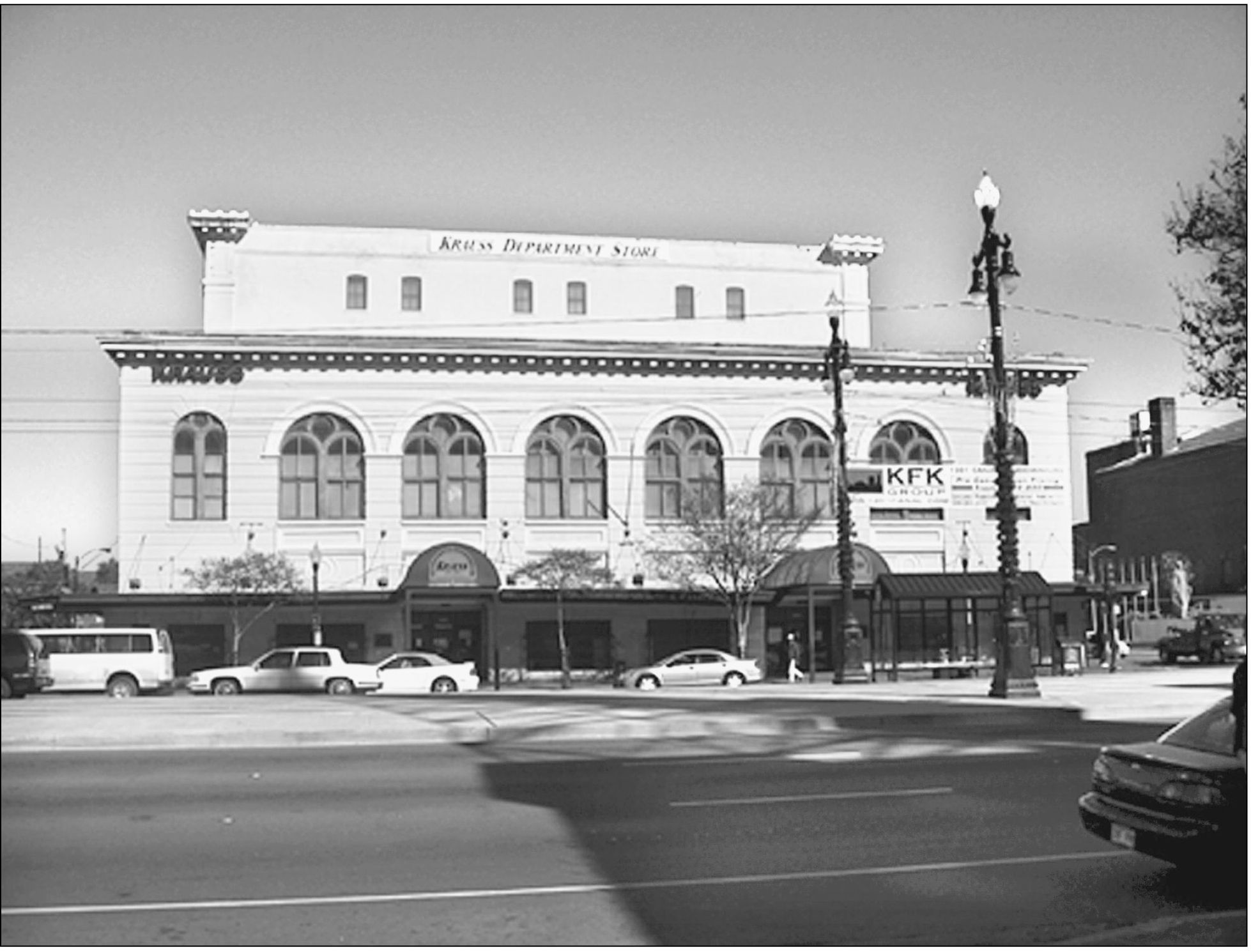
On April 13, 1903, three Krauss brothers—Sam, Leopold, and Max—opened Krauss Company on the corner of Canal and Basin Streets. Three years later, their sister, Thekla, married Leon Heymann, a retail merchant who owned stores in Houma, Thibodaux, New Iberia, and Morgan City, Louisiana. In 1922, Leon Heymann took over the presidency of Krauss Company in New Orleans. It continued to be a family business, which included his Krauss in-laws; his son, Jimmy Heymann; daughter, May; and son-in-law, Leon Wolf. Unlike the specialty stores owned by other Jewish merchants on Canal Street, Krauss carried a extensive inventory of clothing in large sizes, fabrics, furniture, appliances, and items found no where else. After Jimmy Heymann’s death, his widow, Janice “Johnnie” Heymann, aided in running the civic and philanthropic activities at Krauss, while the business continued under the leadership of Hugo Kahn. It closed after almost a century of illustrious service to the community in 1997, and was one of the last single, family-owned stores in the country.
In 1905, pharmacist Gustave Katz (below), who had a drugstore in New Orleans, joined with Sydney Besthoff (above), who owned a drugstore in Memphis but had married a New Orleans lady, to form a partnership called Katz and Besthoff (K & B), which started with one drugstore on Canal Street. By the time Sydney Besthoff died in 1926, several more stores had been added. His son, S. J. Besthoff Jr., bought out the Katz family in 1940, retaining the now well-known name and signature color, “K & B purple.” In 1962, management passed to Sydney Besthoff III. The chain of 186 stores was sold to Rite Aid in 1997.



One of the South’s preeminent architects, Emil Weil (1878–1945) was particularly active in Jewish religious buildings in the first quarter of the 20th century. In 1909, he won a design contest for the new Touro Synagogue on St. Charles Avenue. He designed both the new Beth Israel in 1924 and Anshe Sfard the following year. He also designed the entrance to Temple Sinai on St. Charles Avenue. Among his sectarian buildings were Saenger Theatres in New Orleans, Shreveport, Mobile, Pensacola, and Texarkana. He designed the Strand Theatre in Shreveport and the Tivoli Theatre in New Orleans.

Moise Goldstein (1882–1972) received his undergraduate degree from Tulane University and masters in engineering from the Massachusetts Institute of Technology. As one of New Orleans’s premier architects, his firm designed the National American Bank Building, Sugar Bowl Stadium, Howard Tilton Memorial Library (now Jones Hall) on the Tulane campus, Moisant International Airport (now Armstong International Airport), and—perhaps his greatest achievement—the Dillard University campus. He also participated along with Weiss Dreyfous and Seiferth and Emile Weil in the design of Temple Sinai.

During the 1920s and 1930s, Weiss, Dreyfous and Seiferth was one of the most important architectural firms in Louisiana. Pictured above is Leon C. Weiss (1882–1953); below is Solis Seiferth (1895–1984). During the Depression, when patrons were scarce, their principal client was the State of Louisiana, whose governor, Huey Long, considered them his favorite architects. During that time, they built Charity Hospital, part of Louisiana State University, and they built the Louisiana State Capitol Building, their crowning achievement.


Shown here is the Louisiana State Capitol in Baton Rouge, Louisiana. The following is quoted from the architect Leon C. Weiss: “The capitol is a modern conception, exemplifying the highly developed civilization of the era of its creation. It is simple and restrained both in composition and detail, and though its component masses tend upward, in harmony with the towering masses, beyond the bounds of classical constraint, there is a conservatism—a harking back to tradition—to the end of avoiding the ultramodernism that might well result in its being branded in future critical dictum as obsolescent, or decadent, in style.”

Joseph Goldman came from a little town on the Russian/Polish border about 1900. He came with his wife, Leah, and his oldest son Julius. The rest of his seven children were born in New Orleans. He joined the newly formed Orthodox synagogue, Beth Israel, serving as its gabbi, a learned layperson who guides the daily religious service. His “professions” were philanthropy and Judaism, according to his family, who all have commented that Joseph Goldman made sure that, even in this new world, they studied their religion. Julius Goldman became the director of the Community Chest and a member of the board of Touro Infirmary. Sam Goldman was the bookkeeper at Touro Infirmary. Joseph’s only daughter Bessie married Touro physician A. L. Levin and founded a dynasty of Touro surgeons. Ben, Harry, and Henry were successful businessmen. Shown from left to right are as follows: (first row) Ben Goldman, Joseph Goldman, Harry Goldman, Henry Goldman, and Leah Goldman; (second row) Bessie Goldman, Julius Goldman, Sam Goldman, and Abe Goldman.

Hurwitz-Mintz Furniture Company was founded by Morris Mintz and his wife’s brother-in-law, Joseph Hurwitz, in 1922. The business has grown into two stores, one in the French Quarter and another on Airline Highway in Metairie, Louisiana. Currently it is being managed by the third generation of the Mintz family. The picture here is of a Passover dinner in 1929, with members of the Mintz, Hurwitz, Goldblum, and Weisler families. Morris Mintz and his wife, Goldie, are third and fourth from left in the picture.

Expanding along Prytania Street, Touro Infirmary added buildings in 1925 spanning Aline Street. The buildings were connected in 1936 with an Art Deco addition by the architectural firm of Weiss, Dreyfous, and Seiferth. A basrelief frieze over the doorway depicted science conquering superstition. The interior was lined with marble, and a bellboy waited to carry the patient’s luggage to the room. This remained the hospital’s main entrance until new buildings on Foucher Street greatly enlarged the campus in 1965.
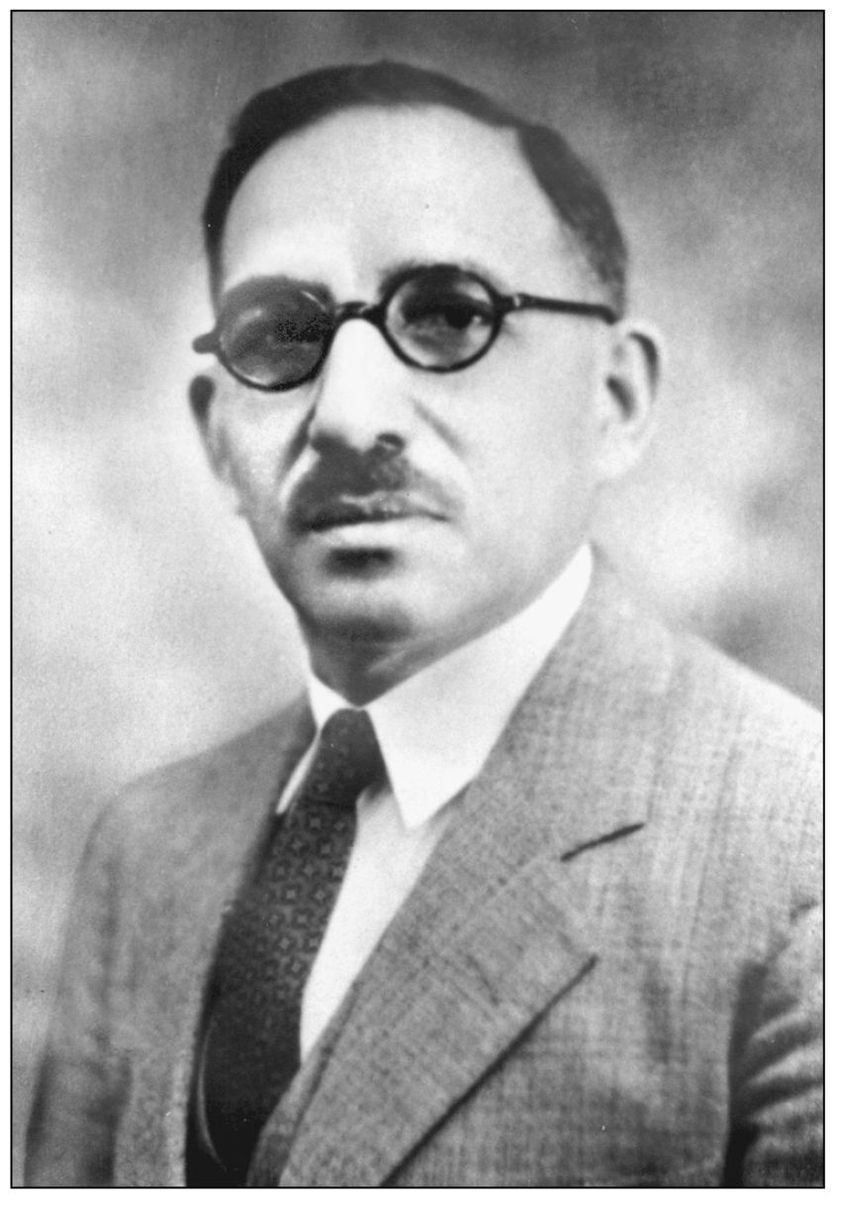
Doctor Abraham Louis Levin (1878–1942), inventor of the Levin Tube—which is still used for duodenal drainage after surgery—came to the United States from Poland in 1902. He graduated from Tulane University Medical School in 1907. He was appointed to the staff of Touro Infirmary in 1908, where he specialized in gastroenterology. It was during his service in World War I at Camp Beauregard in Louisiana that he developed the tube that bears his name. His son, Irving, and grandson, Alan, have followed in his distinguished footsteps on the Touro Infirmary medical staff.

Ida Weis Friend (1868–1963), daughter of Julius and Caroline Weis, married Joseph Friend in 1890. Very active both politically and socially, Mrs. Friend served as president of the National Council of Jewish Women, New Orleans Women’s Chapter of B’nai Brith, New Orleans Consumers League, and the Voters’ Registration League, among others. She was a founder of the New Orleans Symphony Orchestra, the Lyceum Association, and the Spring Fiesta. She was a delegate to the Democratic National Convention in 1921 and a delegate to the Louisiana Constitutional Convention in 1921. Mrs. Friend was awarded the Times Picayune Loving Cup in 1946.
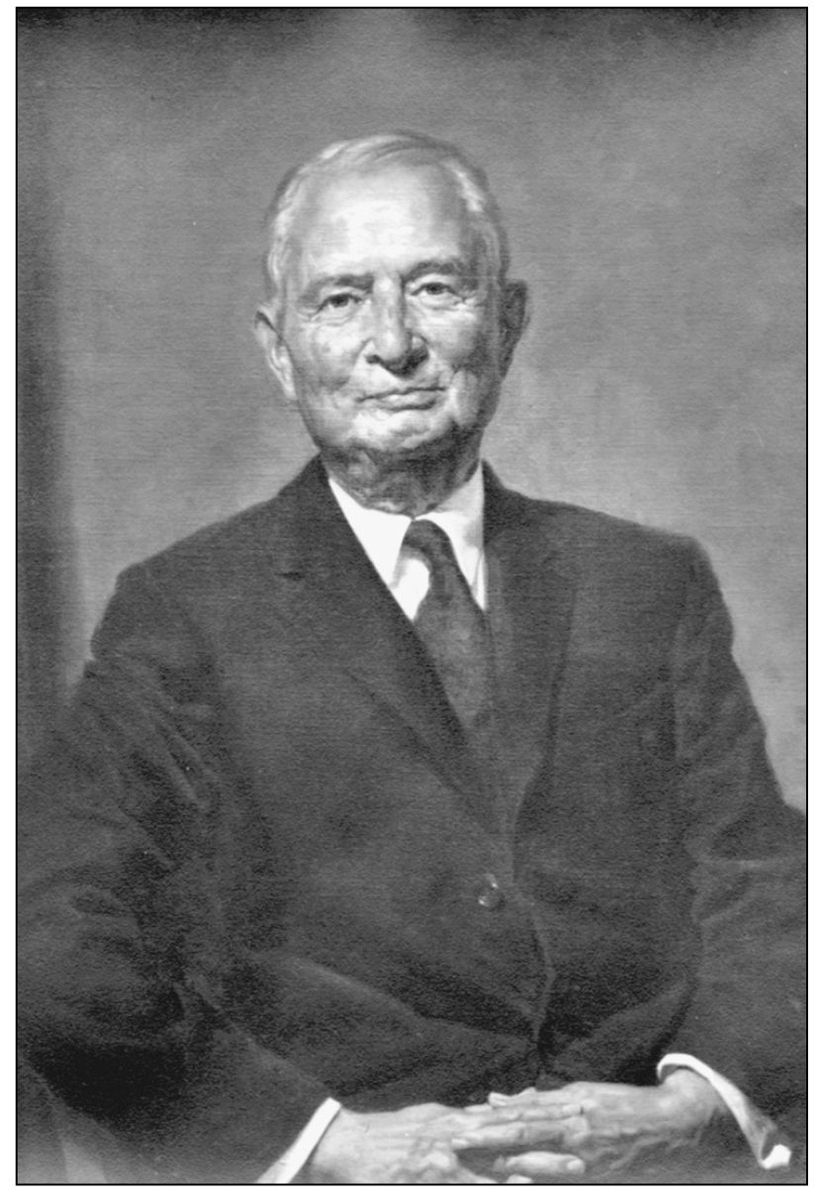
Montefiore Mordecai Lemann (1884–1959) grew up in Donaldsonville, Louisiana, and moved to New Orleans as a teenager, receiving his undergraduate degree from Tulane and his law degree from Harvard. In his long and distinguished practice, he argued cases before the United States Supreme Court and served President Herbert Hoover on the Wickersham Commission on Law Observance and Enforcement. During World War I, he was assistant chief counsel of the United States Shipping Board in Washington, D.C. Among his many honors was his selection as president of both the New Orleans Bar Association and the Louisiana State Bar. He kept his interest in Tulane University, teaching law, helping found Tulane Law Review, and serving as president of its advisory board and as president of the Tulane board of visitors. In the words of Justice Felix Frankfurter, “his scholarly bent enabled him to be an effective force in the life of the two universities of his allegiance, Tulane and Harvard.”

Samuel Zemurray (1877–1961) was born in Bessarabia. He moved to the United States and began selling bananas on the streets of Mobile. He expanded his business, forming the Cuyamel Fruit Company in New Orleans, and then purchased 5,000 acres of land in Honduras to grow his bananas. Zemurray felt that the custom tax agreement between the United State and Honduras was unfair, so he organized a coup, sending two mercenaries along with the former president of Honduras to engage in revolution. With little difficulty, the coup succeeded, and President Bonilla did not forget his friend Sam. For decades Cuyamel competed with the larger United Fruit Company. After a fierce price war, United Fruit decided to purchase Cuyamel from Zemurray for 300,000 shares of stock, making Zemurray the largest stockholder in the company. When the company floundered during the Depression, Zemurray, proxies in hand, stormed into the board of directors meeting and announced he was taking over. He was named managing director and, later, president of the company. In 1948, when the partition of Palestine came before the United Nations, Zemurray used his influence in Central America to get several of those countries to vote in favor of the partition. “Sam, the Banana Man” retired in 1951.
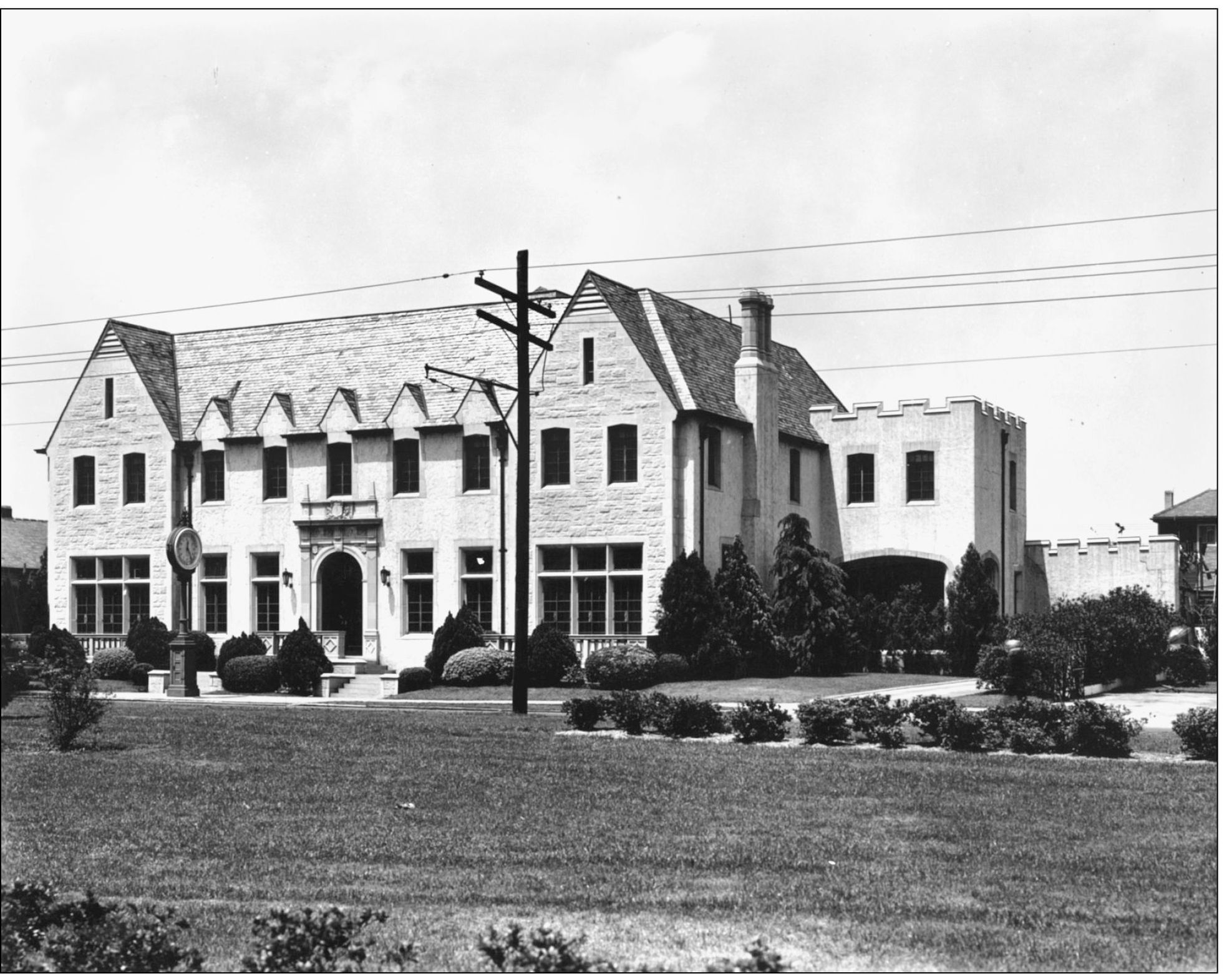
In 1916, I. Sontheimer and his son, M. B. Sontheimer, joined with Henry Tharp and his son, Alfred S. Tharp, to form Tharp Sontheimer Tharp Funeral Home on Carondelet and Toledano Streets. Their aim was to make their new establishment the best and largest in the South. A grand new building was constructed in 1931 on South Claiborne Avenue near Milan Street (pictured), with new generations of Tharps and Sontheimers running the business. Maurice and Jack Sontheimer were joined in the business by son, Stephen, and son-in-law, Leonard Wolff, as the company expanded to include Delta Life Insurance and five other funeral homes around the New Orleans area. In 1882, the entire holdings were sold to E. J. Ourso of Donaldsonville, Louisiana, at which time Stephen Sontheimer became chairman of Security Industrial Funeral Home Corporation. In 1991, Security purchased Bultman, a family-owned funeral home on St. Charles and Louisiana Avenues. The present owner is Loewen-Group of Vancouver, Canada.
Wemco, originally known in New Orleans as Wembley Tie Company, was founded by brothers Samuel (1905–1989), at right, and Emanuel Pulitzer (1902–1967), below. When the brothers were small, their mother had to place them in the Jewish Children’s Home. As is true of so many “home kids,” the Pulitzers became overachievers. By 1937, they had incorporated their company into Wembley, which ultimately became the largest men’s tie manufacturer in the world, home of the Nor-East tie.



A native of Montreal, Canada, Malcolm Woldenberg (1896–1982), with his friend Stephen Goldring, founded Magnolia Marketing Company in New Orleans in 1944. They became a leading distributor of beer, wine, and liquor. Malcolm Woldenberg dedicated his later years to philanthropy, and the Dorothy and Malcolm Woldenberg Foundation has made major contributions to Touro Infirmary, the Jewish Children’s Regional Service, Lakeshore Hebrew Day School, Tulane University, and Children’s Hospital. The foundation has also supported causes in Israel, among them cultural and day care centers, and the Dorothy and Malcolm Woldenberg Orthopedic Hospital and Rehabilitation Center.
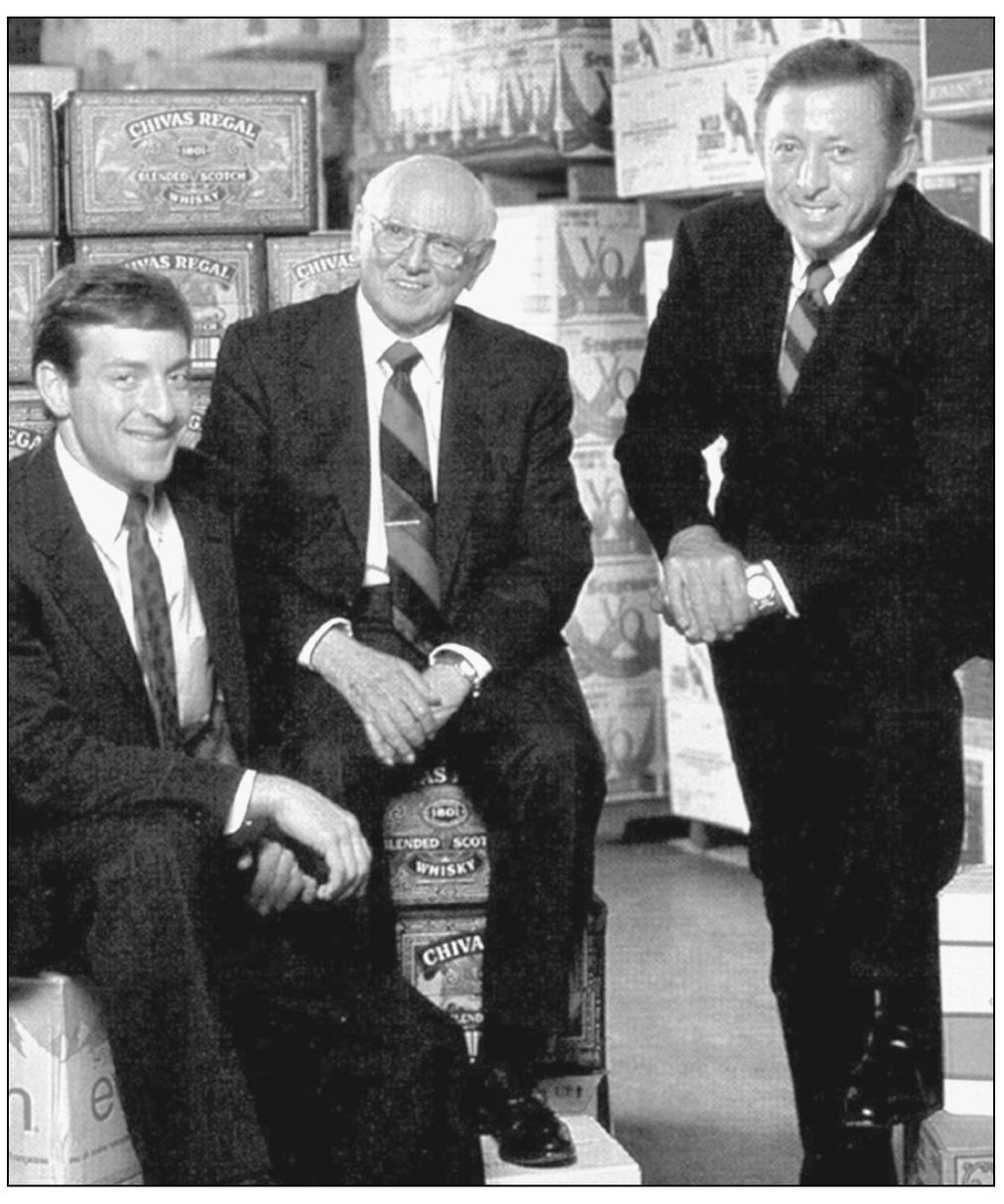
A native of Pensacola, Florida, where he began a wholesale alcohol distributorship soon after the repeal of Prohibition, Stephen Goldring (1908–1996) moved to New Orleans to open Magnolia Marketing with his friend Malcolm Woldenberg. Like Woldenberg, Goldring devoted his later years to directing his charitable Goldring Foundation, as well as the Woldenberg Foundation. Tulane University, University of New Orleans, the Jewish Federation, Temple Sinai, Henry Jacobs Camp, and Touro Infirmary (which honored him with the first Judah Touro Award) all benefited by his philanthropy. Pictured are three generations of Goldrings: Stephen, William, and young Jeff, who carries on the family traditions.

A native of Bayou Sara, Louisiana, Charles Rosen (1872–1957) came to New Orleans in 1887 to enroll in Tulane High School. While there, he was awarded the Judah Touro medal for his paper on history. How prophetic, since he served on the board of Touro Infirmary for 56 years, serving as chairman from 1926 to 1942. Upon graduation from Tulane Law School in 1894, Rosen entered private practice, and also took an interest in New Orleans politics, acting as spokesman for reform political candidates. One of his most notable battles was a successful campaign against Mayor Martin Behrman over control of the Public Belt Rail Road, which Behrman had tried to remove from the Public Service Commission. His service to Touro Infirmary is matched only by his term on Tulane University’s board of administrators, lasting from 1904 to 1954, the last four years as chairman.

The grandson of Abel Dreyfous, Alfred David Danziger (1884–1948) naturally gravitated to the practice of law. A graduate of the Tulane University law class of 1904, he began practice in the law offices of his uncle, Felix J. Dreyfous. He served as assistant attorney general of the state of Louisiana in 1934 and executive counsel for Mayor Robert Maestri from 1936 to 1946. He was president of the Young Men’s Business Club and the New Orleans Association of Commerce, and active in flood-control legislation and the development of Grand Isle. He was also prominent in the YMHA, where he managed the indoor baseball team, the Jerusalem Temple, and Masonic affairs. His name lives on, as the Danziger Bridge, named as a tribute to his civic endeavors, is in the news nearly every night as the site of a traffic snarl.
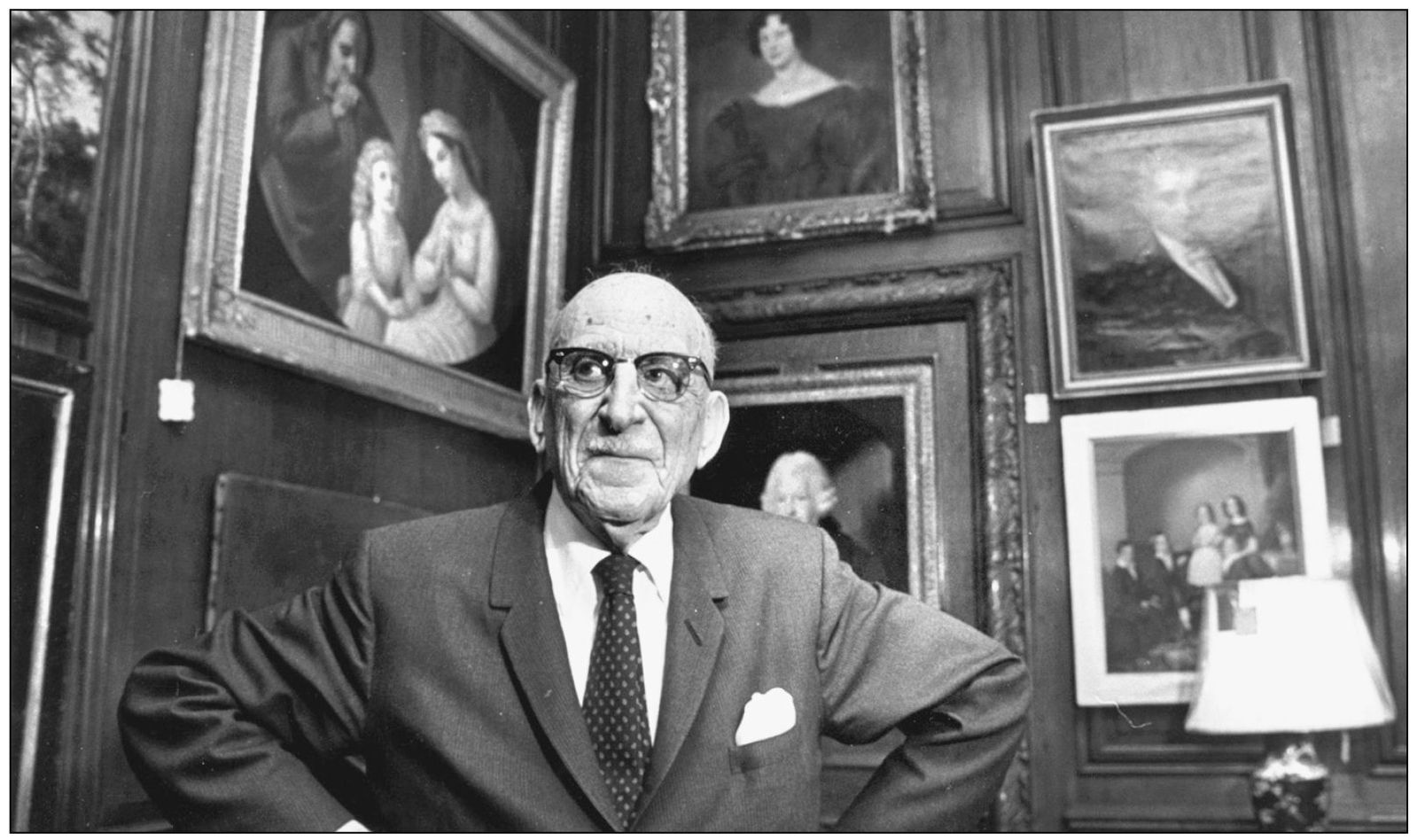
Henry Stern’s (1896–1993) Antique Shop on Royal Street was well known far beyond New Orleans. But he was so much more than a dealer in fine antiques. He taught generations of New Orleanians how to recognize and appreciate his beloved French Provincial and Country, or Manor House English, furniture. His wife, Janice, became an expert on period fabrics, which added a decorative dimension to the antique shop. A graduate of Tulane University, he was a sponsor and actor at Le Petit Theatre, a member of the Royal Street Guild, and a member of the board of directors of the New Orleans Museum of Art. After Henry Stern’s death, the shop continued for a few years, but without his incomparable spirit, it finally closed after 75 years.

In 1909, Joseph Haspel and his brothers began making seersucker suits in their factory in New Orleans. Seersucker was a lightweight, inexpensive material, which looked the same no matter the heat and humidity. Before this innovation, New Orleans businessmen had the option of heavy wool or white linen suits in summer, which had to be laundered, starched, and ironed with every wearing. These suits gained popularity, not only with local gentlemen, but also with people around the country, including presidents and movie stars.